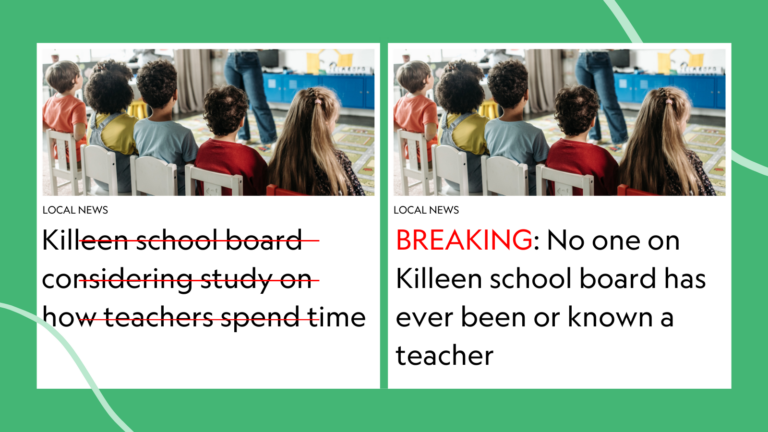I’m a high school journalism teacher who recently completed my district’s back-to-school survey. The options were clear and simple, but loaded and complicated:
- I will be returning to in-person face to face teaching.
- I will be requesting a virtual teaching placement due to preference or an existing medical condition.
- I will be resigning, retiring, or taking a leave.
But let’s be real. Teachers around the country are reading these surveys as:
- I will come in for the sake of my beloved students, risking the health and safety of myself, my coworkers, and my family. I’m choosing this because I know that virtual teaching will never be as beneficial to the kids as being in the classroom.
- I value my health, my family’s health, and I realize virtual teaching is safer than in person right now. I choose self-care, self-preservation, and the health of my own children over the education of the children I also care deeply for.
- I realize neither of these options is good enough, and probably won’t be for a long time. So I’m quitting, changing careers, or changing courses.
Regardless of which option you chose, it was a lose/lose decision for all involved.
[contextly_auto_sidebar]
We are losing good teachers, and it may not be reversible.
In June, we began to realize just how severe the loss could be to the education system. One in five educators said they didn’t think they’d be back or were scared to return. Stories are emerging from around the country of teachers being forced to choose between a career they love and their health. Teaching was already suffering as a profession, with widespread burnout, strikes, and unmet needs. The pandemic just might be the final straw, especially considering that one in three teachers are over age 50. No survey shows the true extent of teacher’s fear, though it’s evident in impending strikes from Chicago to Louisville, and in many places between.
One teacher reported to the Denver Post that he’d be retiring early, rather than when he was personally ready, because he didn’t want to face education during COVID this fall. Another 11th grade English and yearbook teacher in Alabama decided to retire early as well after 31 years of teaching. “I wouldn’t have retired had it not been for this situation. My parents are in their 80s, and my own immune system is just not built for teaching in a pandemic,” she said.
For her, and others around the country, the choice is clear … and devastating.
The increase in teachers considering and switching to other fields has become quite obvious to Stacey Ogden, a grades 6-8 music teacher in Connecticut and owner of a business called Side Hustle Teachers. She runs a Facebook page where teachers discuss their side hustles, and unsurprisingly, the group is booming.
The group started nearly two years ago. Pre-pandemic the group had 3,900-4,000. In just a matter of months that number has jumped to 5,000, indicating that teachers are engaging in “daily talks of new side hustles and what teachers can do to replace their teaching income so they don’t have to go back into school buildings,” Ogden said.
Who will replace the teachers that are leaving?
There’s no question that we’re losing current teachers at a rapid rate. But I also have to wonder what will happen to the new teacher pipeline as well. Who will sign up for a profession that is notoriously underpaid, unsupported, and now comes with a risk of death? The fact is we might not recover from this as a profession.
Do you feel you’re losing good teachers in your district due to the pandemic? Come and share in our WeAreTeachers HELPLINE group on Facebook.
Plus, why teachers quit.
The author of this post asked to remain anonymous.


